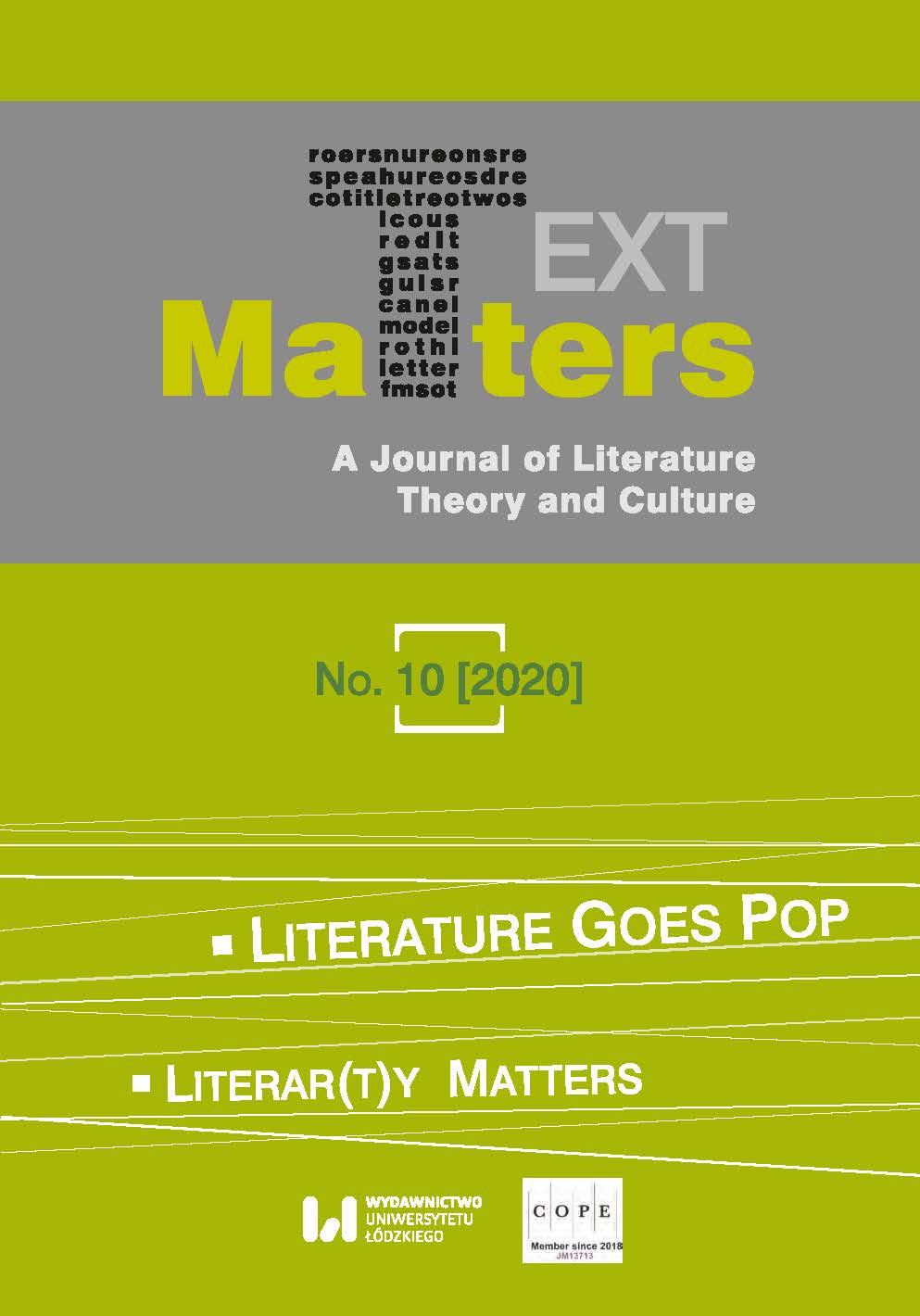In the Universe of Cassandra: The Ancient Topos of Clairvoyance in the Futuristic World of Minority Report (2002)
DOI:
https://doi.org/10.18778/2083-2931.10.09Keywords:
Cassandra, free will, determinism, Minority ReportAbstract
The figure of Cassandra is well-known from numerous representations in ancient and modern literature as an archetype of a woman who has the power to see the future, but whose visions are not believed. In ancient Greek literature, Cassandra was an important character serving as a prophet of an approaching catastrophe. In her modern adaptations, this figure became a metaphor in psychoanalytical research on human moral behaviour (Melanie Klein and the Cassandra complex) developed in feminist writing. Cassandra has also been of interest to filmmakers, with perhaps the best adaptation of the subject of Cassandra’s clairvoyance being Steven Spielberg’s film Minority Report. Loosely based on Philip K. Dick’s 1956 short story The Minority Report, the plot presents a version of the Cassandra myth, in which a woman together with male twins operate as a group mind to predict future crimes. Their visions are used by the state to prevent the crimes and imprison the would-be criminals. This article offers a thorough analysis of all the ancient and modern features of the metaphor of Cassandra employed in this movie within the overarching framework of the central theme of free will vs. determinism. According to this approach, the central theme is examined with reference to ancient Aristotelian and Stoic moral philosophy, the modern feminist psychoanalysis of Melanie Klein, and the political philosophy and legal issues in the post-9/11 world.
Downloads
References
Abrams, Jerold J. “Space, Time, and Subjectivity in Neo-Noir Cinema.” The Philosophy of Neo-Noir. Ed. Mark T. Conard. Lexington: Kentucky UP, 2007. 7–20. Print.
Google Scholar
Aeschylus. Agamemnon. Trans. Herbert W. Smyth. Cambridge, MA: Harvard UP, 1926. Print.
Google Scholar
Aristotle. Nicomachean Ethics. Trans. H. Rackham. Aristotle in 23 Volumes. Volume 19. Cambridge, MA: Harvard UP, 1934. Print.
Google Scholar
Aristotle. Politics. Trans. H. Rackham. Aristotle in 23 Volumes. Volume 21. Cambridge, MA: Harvard UP, 1944. Print.
Google Scholar
Auger, Emily. Tech-Noir Film: A Theory of the Development of Popular Genres. Bristol: Intellect, 2011. Print.
Google Scholar
Briefly Noted. Rev. of The One Percent Doctrine, by Ron Suskind. Newyorker.com. The New Yorker 3 Jul. 2006. Web. 29 Nov. 2019.
Google Scholar
Burkert, Walter. Greek Religion. Archaic and Classical. Trans. John Raffan. Oxford: Blackwell, 1996. Print.
Google Scholar
Cicero. De Senectute. De Amicitia. De Divinatione. Trans. William A. Falconer. Cambridge, MA: Harvard UP, 1923. Print. https://doi.org/10.4159/DLCL.marcus_tullius_cicero-de_divinatione.1923
Google Scholar
DOI: https://doi.org/10.4159/DLCL.marcus_tullius_cicero-de_divinatione.1923
Conard, Mark T. “Introduction.” The Philosophy of Neo-Noir. Ed. Mark T. Conard. Lexington: Kentucky UP, 2007. 1–4. Print.
Google Scholar
Cooper, M. G. “The Contradictions of Minority Report.” Film Criticism 28.2 (2003): 24–41. Print.
Google Scholar
Hardwick, Lorna, and Stephen Harrison. “Introduction.” Classics in the Modern World. A ‘Democratic Turn’? Ed. Lorna Hardwick and Stephen Harrison. Oxford: Oxford UP, 2013. XIX–XXXVII. Print. https://doi.org/10.1093/acprof:oso/9780199673926.001.0001
Google Scholar
DOI: https://doi.org/10.1093/acprof:oso/9780199673926.001.0001
Klein, Melanie. “Some Reflections on The Oresteia.” Envy and Gratitude—and Other Works 1946–1963. London: Vintage, 1997. 275–99. Print.
Google Scholar
“Mansplaining.” Merriam-webster.com. Merriam-Webster March 2018. Web. 29 Nov. 2019.
Google Scholar
Minority Report. Dir. Steven Spielberg. Perf. Tom Cruise, Samantha Morton. Twentieth Century Fox, 2002. DVD.
Google Scholar
O’Connor, Timothy, and Christopher Franklin. “Free Will.” The Stanford Encyclopedia of Philosophy (Spring 2020 Edition). Ed. Edward N. Zalta. Forthcoming. Plato.stanford.edu. Stanford Encyclopedia of Philosophy. Web. 28 Nov. 2019.
Google Scholar
Rogers, Brett M., and Benjamin E. Stevens. “Introduction: The Past is Undiscovered Country.” Classical Traditions in Science Fiction. Ed. Brett M. Rogers and Benjamin E. Stevens. Oxford: Oxford UP, 2015. 1–24. Print.
Google Scholar
Seneca, Lucius Annaeus. “Epistula CVII.” Moral Letters to Lucilius (Epistulae morales ad Lucilium). Trans. Richard M. Gummere. Volume 3. London: Heinemann, 1925. Print.
Google Scholar
Solnit, Rebecca. “Cassandra Among the Creeps.” Harper’s Magazine 329 (1973): 4–9. Ezproxy.library.ubc.ca. University of British Columbia Library Oct. 2014. Web. 25 Nov. 2019.
Google Scholar
Virgil. Aeneid. Trans. Theodore C. Williams. Boston: Houghton Mifflin, 1910. Print.
Google Scholar
Wolf, Christa. Cassandra: A Novel and Four Essays. Trans. Jan van Heurck. New York: Farrar, Strauss & Giroux, 1983. Print.
Google Scholar
Downloads
Published
How to Cite
Issue
Section
License

This work is licensed under a Creative Commons Attribution-NonCommercial-NoDerivatives 4.0 International License.













